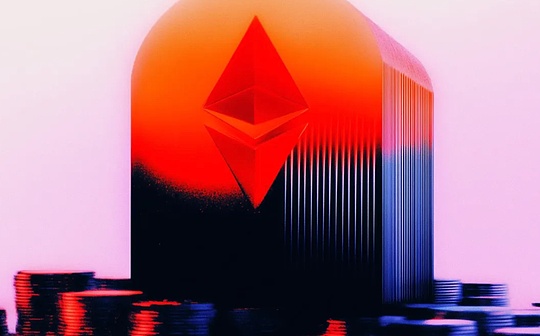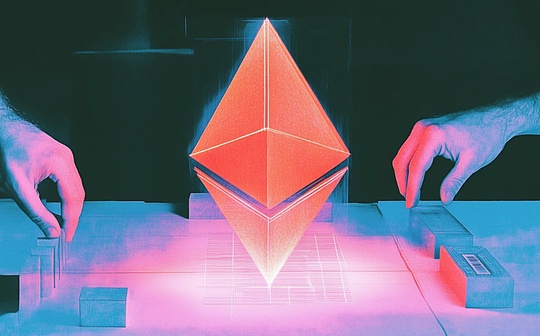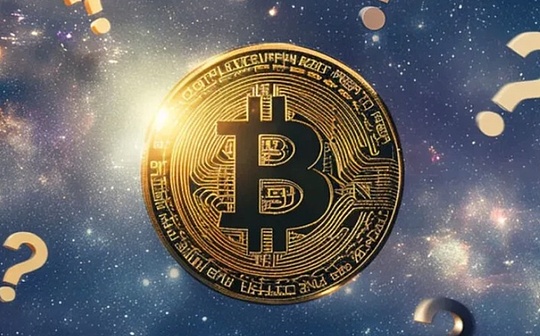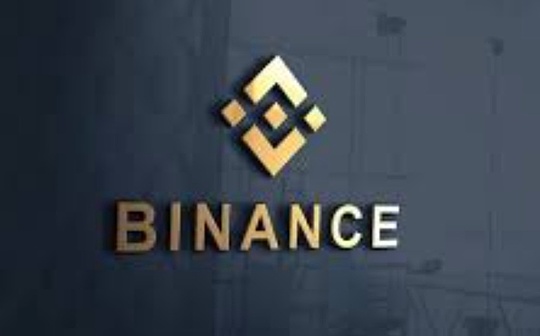
Source: Token Insight
Preface
Comparing Ethereum with Solana is one of the most controversial topics in the current cryptocurrency market.As two of the most influential blockchains, they each have unique characteristics and meet the needs of different user groups in the crypto ecosystem.
Ethereum, often seen as a pioneer in smart contracts, has become the preferred platform for decentralized applications (dApps) and decentralized finance (DeFi).It enjoys first-mover advantage, its large developer community and strong network effects make it the first-tier blockchain that ranks first in both adoption of metrics and social influence.Solana, on the other hand, is known for its high-speed transactions and scalability.Solana can process tens of thousands of transactions per second, making it a powerful choice for high-frequency transactions and real-time applications.
This article compares Ethereum and Solana to explore their strengths and weaknesses.We hope readers can have a clearer understanding of the uniqueness of each platform.
Advantages of Ethereum
Ethereum has the most powerful network effect in all one-layer blockchains.As the first smart contract platform, Ethereum attracts the largest number of users and a large and active community of developers.Ethereum has a huge ecosystem of decentralized applications (dApps), tools and resources, making new projects easier to build and grow.As more projects and developers choose to build on Ethereum, the more valuable the network becomes, which further attracts more users and projects, forming a positive feedback loop.
In terms of economic security, Ethereum also stands out in the first-tier blockchain.As of July 2024, more than one million validators have more than $110 billion in staking ETH.The huge amount of pledge value creates strong economic incentives for validators to act honestly.

As a Proof-of-Stake blockchain, the economic attack threshold on Ethereum can be divided into three categories based on the total stake ETH percentage that the attacker needs to control:
-
Controlling 33% of total stake ETH is sufficient to disrupt finality and increase the likelihood of attack success
-
Controlling 50% of total stake ETH enables attackers to dominate the fork selection algorithm, enabling transaction review and short-range reorganization
-
Attackers need to control 66% of the total stake ETH to make double payments
However, with more than $110 billion in staking ETH, it would be prohibitive for attackers to obtain enough ETH to perform these attacks.This high economic cost becomes a powerful deterrent to prevent malicious behavior.
As the first smart contract platform, Ethereum demonstrates significant maturity and stability.Compared to some newer blockchains, Ethereum has not experienced significant network-wide disruptions that resulted in a total cessation of operations.This reliability is crucial for developers, users and enterprises that rely on the network for a variety of applications and services.
While Ethereum has faced challenges such as network congestion during high demand, these problems do not lead to complete network failures, but rather slower transaction times and higher gas fees, and Ethereum is undergoing various upgrades and layer 2 expansionsSolutions to solve these problems.
Another major advantage Ethereum enjoys over other layer one networks is regulatory recognition.Ethereum has gained recognition as a legitimate asset in the eyes of regulators, which enhances its appeal to institutional investors.It is worth noting that Ethereum Spot Exchange Trading Funds (ETFs) were approved in July 2024.These investment vehicles provide investors with a regulated and easy-to-use way to gain exposure to Ethereum without the complexity of buying and storing cryptocurrencies directly.
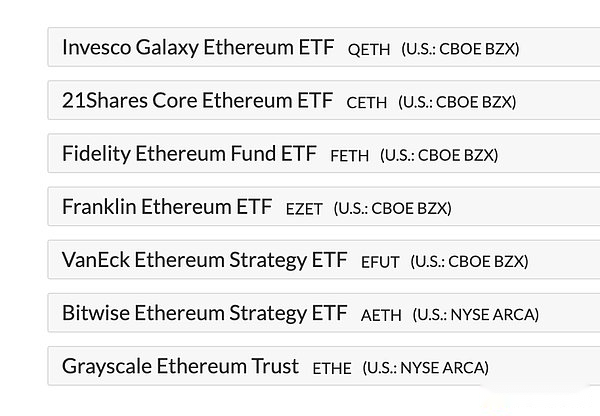 Source: marketwatch.com
Source: marketwatch.com
Advantages of Solana
Solana takes scalability as its core principle, enabling it to handle up to 65,000 transactions per second.This high scalability is achieved through a combination of innovative technologies, including Proof of History (PoH) and Turbine (a block propagation protocol).PoH provides an encrypted timestamp to sort transactions, achieving high throughput without sacrificing security.This scalability makes Solana ideal for applications requiring high transaction volumes, such as high frequency trading and large-scale decentralized applications.
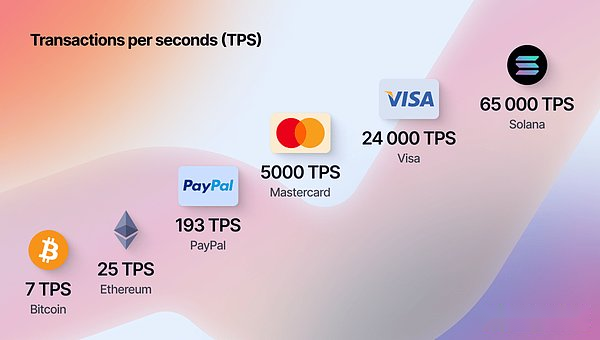
Solana offers low transaction latency, and transactions can be processed and confirmed in seconds.The network achieves a block time of approximately 400 milliseconds, ensuring fast transaction finality.To better understand this, we can compare it: Compared to Solana’s blocking takes 400 milliseconds, the blocking time of Ethereum is 12 seconds.Solana each block reaches finality in about 5 to 12 seconds, and Ethereum finality usually takes about 13 minutes to achieve.
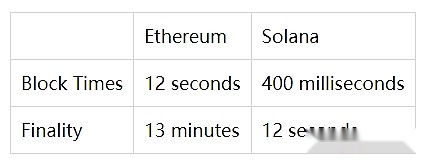
Solana’s low latency is critical to real-time applications and competitive trading environments where speed is the most important.Solana’s ability to provide near-instant transaction finality enhances the user experience, making it a strong competitor to centralized financial systems and exchanges.
Solana uses complex block building technologies that help improve its efficiency and performance.The network’s architecture supports advanced mechanisms such as Gulf Stream (forwards transactions to validators before the current block is completed) and Sealevel (to implement parallel execution of smart contracts).These mechanisms reduce confirmation time and improve throughput.
Decentralized efforts
Although it is currently more centralized than Ethereum, Solana is actively working to further decentralize its network.These efforts include decentralized pre-confirmation methods and improved validator distribution.The Solana Foundation provides grants and support to help new validators join the network, ensuring that the network is not dominated by a small number of large participants.Solana also introduced the Firedancer client, which makes Solana the only network after Bitcoin and Ethereum to have a second standalone client on the main network.
Ethereum’s scalability dilemma and fragmentation problems
Both Ethereum and Solana face significant technical challenges that affect their performance and adoption.The main challenge of Ethereum has always been scalability.Despite constant efforts to implement sharding and layer 2 solutions, Ethereum still faces high transaction fees and slower transaction time issues during peak use.
Ethereum’s adoption of layer 2 scaling solutions (L2s) also presents a new challenge – fragmentation.Currently, there are 64 layer two protocols, 18 layer three protocols, and 81 second and third-layer projects that are about to enter the Ethereum ecosystem.As different L2s run in isolated environments, it becomes difficult for decentralized applications (dApps) and users to interact seamlessly between these networks.
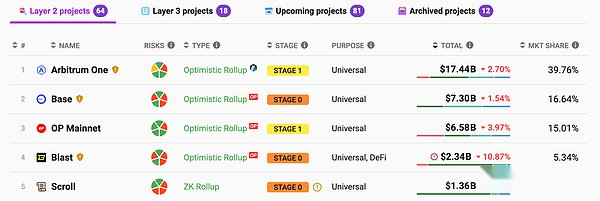
Layer 2 fragmented state leads to several problems, weakening the user experience and Ethereum’s network effects.
Interoperability Problems: As various L2 solutions evolve independently, they create isolated ecosystems.This fragmentation hinders the ability of DApps to interact between different Layer 2s, reducing the overall composability of the Ethereum ecosystem.Users may find it difficult to transfer assets or data between Layer 2, requiring additional complexity, such as the use of cross-chain bridges, which also poses additional security risks.
Liquidity fragmentation: With the emergence of many L2s, liquidity is scattered on different platforms.Liquidity dilution makes it harder for users to find enough trading liquidity, resulting in inefficiency and higher costs when trading assets.
User Experience Complexity: Each L2 may require the user to set up a new endpoint or wallet, complicating the user experience.
Centralized risk: Many L2 solutions rely on a limited number of operators to verify transactions.This centralization can pose risks, such as if these operators fail or are compromised, which can lead to potential downtime or vulnerabilities.As L2 matures, greater decentralization is needed to ensure security and reliability.
Layer 2 Solutions Immaturity: The main Ethereum Layer 2 extension solutions are still in their early stages of development, with most projects only reaching Stage 0 or Stage 1 in terms of security assurance and decentralization.According to the L2Beat classification system, for a Layer 2 rollup to reach Stage 1, a “complete and functional proof system” and a “escape pod” must be deployed, allowing users to take their assets back to the Ethereum main network without permission..So far, only Arbitrum and Optimism have reached Stage 1, while other major rollups such as Base and zkSync are still in Stage 0.
Solana’s security issues
While outstanding in scalability, Solana also faces its own set of challenges, such as potential Time Game issues and the complexity of maintaining high-speed performance without sacrificing security.The network’s reliance on Proof of History (PoH) and its hybrid consensus mechanism raise concerns about the risks of centralization and validator collusion.Additionally, Solana has experienced several network outages and performance issues, which has raised questions about its long-term stability and reliability.
Solana’s unique consensus mechanism, combining Proof of History (PoH) and Proof of Stake (PoS), introduces the potential possibilities of timing gaming.Verifiers may use the timestamp feature to manipulate transaction order, thereby enabling pre-emptive transactions or review transactions.This risk has raised questions about the fairness of transaction processing, especially in high-risk environments such as decentralized finance (DeFi).
Reliance on hybrid consensus models has also raised concerns about centralization.While Solana’s architecture allows for high throughput, the architecture favors large validators with expertise and financial resources, resulting in a concentration of verification power.This centralization may make the network more susceptible to collusion among validators and reduce overall security.
Network outage
Solana has experienced several network outages, which has raised questions about its reliability.For example, there was a major interruption on February 6, 2024.The incident lasted nearly five hours, highlighting the vulnerability of network infrastructure.Although Solana’s engineering team demonstrates the ability to respond quickly and recover, the frequency and duration of these interruptions can weaken user trust and prevent developers from building applications on the platform.
Despite improvements in network performance metrics, Solana still faces performance-related challenges under high loads.Historical events show that the influx of large amounts of transactions can lead to congestion, resulting in delays and failures in transaction processing.Although designed for high-speed operation, the network may experience difficulties in the face of unexpected surges in demand, resulting in a decline in user experience.
The coexistence of Ethereum and Solana
Given the unique strengths of Ethereum and Solana, each platform is targeted at different needs and usage scenarios, allowing them to complement each other rather than compete directly.
Ethereum’s strong network effects, security and maturity make it ideal for applications that require high trust and composability.In contrast, Solana’s high throughput and low transaction costs are ideal for applications that require fast transaction processing and low fees.The complementary advantages of Ethereum and Solana can lead to a diversified and powerful blockchain ecosystem.By serving different market segments, Ethereum and Solana can enhance the overall functionality and adoption of decentralized technologies, providing users with a range of options tailored to their specific needs.

